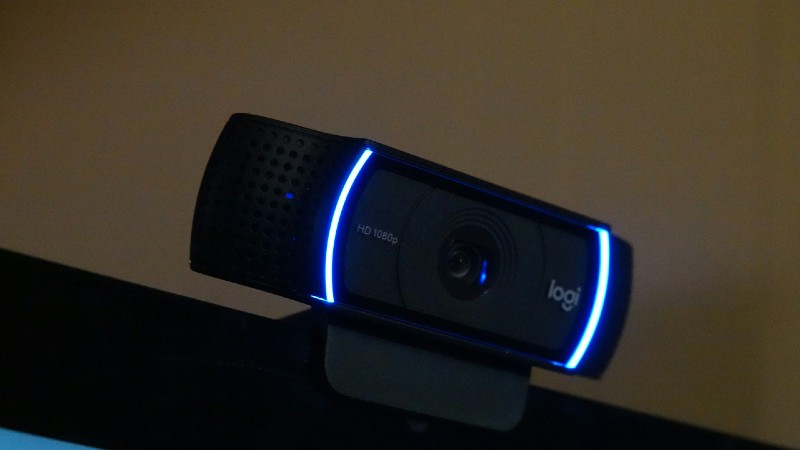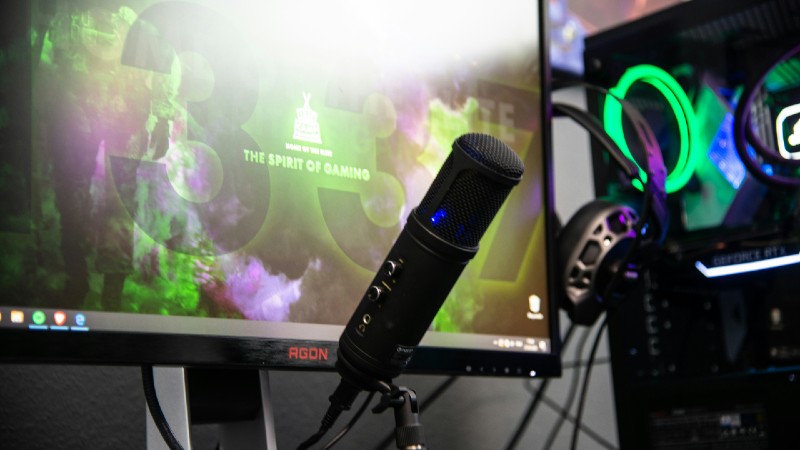Disclosure: As an Amazon Associate, we earn from qualifying purchases. This post contains affiliate links. Our reviews are based on extensive research, including customer feedback and specs, though we haven’t tested every product listed.
As gaming continues to push the boundaries of immersion and visual quality, capturing those moments for streaming or content creation has become essential. With 2025 ushering in advanced consoles like the PS5 Pro and Nintendo Switch 2, a high-quality capture card is a must for showcasing gameplay in stunning detail. Whether you’re a streamer aiming for professional-grade broadcasts or a casual creator recording memorable moments, the right capture card can elevate your setup. In this guide, we’ll explore five top-tier capture cards, balancing performance, affordability, and ease of use to help you find the perfect fit for your gaming needs.
A Snapshot of the Top Contenders
To give you a quick overview, here’s a comparison table summarizing the key specifications, pricing, and ratings for each capture card. Prices are approximate as of mid-2025 and may vary by retailer.
| Product | Price (Jul 2025) | Stars | Max Capture Resolution | Max Passthrough | Key Features | Ideal For |
|---|---|---|---|---|---|---|
| Elgato HD60 X | $148 | 4.5 | 4K30 or 1080p60 HDR10 | 4K60 HDR10 | Ultra-low latency, VRR support, compact design | Versatile streaming and recording on consoles or PC |
| AVerMedia Live Gamer Ultra 2.1 | $190 | 4.3 | 4K60 | 4K144 HDR/VRR | Party chat integration, 5.1 audio, RGB lighting | High-end 4K streaming with advanced audio needs |
| Elgato Game Capture Neo | $119 | 4.3 | 1080p60 | 4K60 HDR | Plug-and-play, iPad compatible | Beginners and portable setups |
| AVerMedia Live Gamer Extreme 3 | $90 | 4.3 | 1080p60 | 4K60 HDR | Audio in/out ports, VRR, budget-friendly | Entry-level console capture with audio mixing |
| NZXT Signal 4K30 | $113 | 4.3 | 4K30 | 4K60 HDR | Zero-lag passthrough, no software required | Simple, high-res PC or console streaming |
This table highlights how each card caters to different priorities, from budget-friendly options to premium 4K performance. Let’s dive into detailed reviews to explore their strengths and weaknesses.
Exploring the Top Picks: Detailed Reviews and Insights
Elgato HD60 X

The Elgato HD60 X is a versatile choice for gamers looking to capture high-quality footage without sacrificing gameplay performance. Its sleek design and support for HDR and variable refresh rates make it a reliable option for modern consoles and PCs, ideal for creators transitioning to polished content production.
Pros:
- Captures at 4K30 or 1080p60 with HDR10 for vibrant, detailed videos.
- Ultra-low latency 4K60 HDR10 passthrough ensures smooth gaming.
- Compact, matte black design fits seamlessly into any setup.
- Works with popular software like OBS, avoiding proprietary app issues.
- Broad compatibility with PC, Mac, and consoles like the Nintendo Switch 2.
- Integrates with Elgato’s Stream Deck for streamlined stream controls.
Cons:
- Limited to 4K30 capture, which may not meet needs for 4K60 footage.
- Occasional connectivity issues, requiring cable adjustments or restarts.
- Lightweight build can be tilted by heavy HDMI cables, complicating cable management.
- Lacks built-in audio mixing, necessitating external solutions for commentary.
- Chroma subsampling may slightly affect color accuracy in fast-paced scenes.
The HD60 X excels for creators needing a balance of quality and ease of use. It handles extended PS5 sessions with no noticeable lag, and VRR support minimizes screen tearing in competitive games. Compared to older models, it’s a step up for modern setups, though those needing 4K60 capture might consider other options.
Ready to enhance your streams? Check out the Elgato HD60 X on Amazon
AVerMedia Live Gamer Ultra 2.1

The AVerMedia Live Gamer Ultra 2.1 is a premium choice for creators prioritizing 4K excellence. With HDMI 2.1 support, it delivers high refresh rates and rich visuals, making it ideal for next-gen consoles and high-end PCs. Its party chat integration adds value for collaborative streaming.
Pros:
- Captures at 4K60 with ultra-low latency for crisp, professional content.
- Supports 4K144 HDR/VRR passthrough for tear-free gameplay on premium displays.
- Built-in party chat recording simplifies capturing group audio.
- 5.1 multi-channel audio support enhances immersive recordings.
- RGB lighting customization adds aesthetic appeal to your setup.
- Plug-and-play with OBS and other third-party software for quick setup.
Cons:
- Higher price point may not suit budget-conscious users, especially with large 4K file sizes.
- Limited support for advanced features in RECentral software, requiring workarounds.
- 5.1 audio is Windows-only, limiting functionality for Mac users.
- Requires a PC connection, lacking standalone recording capabilities.
- May need firmware updates to address initial performance glitches.
The Ultra 2.1 shines in demanding scenarios, like streaming fast-paced multiplayer games with VRR for smooth visuals. Compared to the HD60 X, it offers superior capture resolution but at a higher cost. Its audio ports make it a strong choice for creators needing robust sound options.
Upgrade your 4K streaming with the AVerMedia Live Gamer Ultra 2.1 on Amazon.
Elgato Game Capture Neo

The Elgato Game Capture Neo is designed for beginners, offering a simple solution for content creation. Its plug-and-play nature and iPad compatibility make it perfect for those starting out or needing a portable setup.
Pros:
- Affordable at $119, with 1080p60 capture for most streaming needs.
- 4K60 HDR passthrough maintains gaming quality.
- True plug-and-play with no proprietary software, compatible with OBS and more.
- iPad compatibility enables portable recording.
- Sleek white design blends into modern setups.
Cons:
- Limited to 1080p60 capture, insufficient for higher-resolution needs.
- Potential HDCP issues may require console setting adjustments.
- No VRR support, risking tearing in variable-frame-rate games.
- Audio capture can be inconsistent without proper configuration.
- Lacks advanced audio mixing features.
The Neo is ideal for casual creators, handling tasks like Switch gameplay recording with ease. Compared to the HD60 X, it sacrifices some power for affordability and portability, with iPad support adding unique flexibility for mobile setups.
Start creating with the Elgato Game Capture Neo on Amazon
AVerMedia Live Gamer Extreme 3

The AVerMedia Live Gamer Extreme 3 is a budget-friendly option delivering solid performance for console gamers. Its audio ports and VRR support make it a compelling choice for those prioritizing value and audio flexibility.
Pros:
- Cost-effective at $90 with 1080p60 capture for everyday streaming.
- 4K60 HDR passthrough with VRR for smooth gaming visuals.
- Audio in/out ports simplify commentary and audio mixing.
- Supports multi-streaming via RECentral software.
- Compact design with easy plug-and-play setup.
Cons:
- Capture limited to 1080p60, restricting high-resolution options.
- SDR-only recording reduces color vibrancy in HDR content.
- Can run hot during prolonged use.
- Flashing LED when idle can be distracting.
- Slight latency at higher resolutions.
This card performs well for 1080p streams, offering audio versatility that rivals pricier models. Compared to the Neo, it adds VRR for smoother gameplay but is less portable. It’s a great pick for budget-conscious console streamers.
Get started with the AVerMedia Live Gamer Extreme 3 on Amazon
NZXT Signal 4K30

The NZXT Signal 4K30 is a minimalist’s dream, offering high-quality passthrough and capture without unnecessary software. It’s ideal for creators seeking simplicity and reliability in PC or console setups.
Pros:
- Captures 4K30 with zero-lag 4K60 HDR passthrough.
- Supports 1080p240 for fast-paced gaming content.
- No proprietary software needed; works directly with OBS.
- Compact matte black design for discreet placement.
- Affordable and versatile for various setups.
Cons:
- No VRR support, which may cause tearing in some games.
- Audio issues if no output device is connected.
- Limited to 4K30 capture, not ideal for 60fps needs.
- Setup challenges in dual-PC configurations.
- Lacks audio ports for direct mixing.
The Signal 4K30 offers strong value for basic high-resolution streaming, outperforming pricier cards in simplicity. Compared to the Ultra 2.1, it skips advanced audio features but maintains solid visuals at a lower cost.
Secure the NZXT Signal 4K30 on Amazon
Head-to-Head: How These Cards Stack Up
The Elgato HD60 X and AVerMedia Live Gamer Ultra 2.1 lead for versatility, with the Ultra excelling in 4K60 capture for future-proof setups. The Elgato Game Capture Neo and AVerMedia Live Gamer Extreme 3 cater to budgets under $120, with the Neo offering portability and the Extreme 3 providing audio flexibility. The NZXT Signal 4K30 strikes a balance, delivering premium passthrough without complexity.
Resolution-wise, the Ultra 2.1’s 4K60 capture outpaces the HD60 X’s 4K30. All cards maintain low latency, but VRR in the HD60 X, Ultra, and Extreme 3 enhances competitive gaming. Compatibility is broad, though the Neo’s iPad support is unique. Your choice hinges on whether you prioritize capture quality (Ultra), affordability (Neo/Extreme), or simplicity (Signal).
Essential Factors When Choosing a Capture Card
Choosing the right capture card requires aligning features with your goals. Consider resolution and frame rate: 4K60 is ideal for professional content, while 1080p60 suffices for most streamers. Low latency is crucial to avoid input lag, especially in fast-paced games. Passthrough capabilities, including HDR and VRR, preserve your gaming experience.
Compatibility with your PC, Mac, or consoles is essential, as is seamless integration with software like OBS. Audio features, such as mixing ports or party chat support, enhance production quality. Portability matters for travel-friendly setups, and build quality affects long-term reliability. Budget is key—entry-level cards around $100 offer value, while premium models above $150 deliver advanced features.
For professional audio to complement your capture card, check out our top microphones guide at
Top 5 Gaming Microphones for 2025: HyperX QuadCast S vs. Elgato Wave:3 vs. SteelSeries Alias Pro & More.
Wrapping Up: Finding Your Perfect Match
In 2025, these five capture cards cater to a range of needs, from the versatile Elgato HD60 X to the high-end AVerMedia Live Gamer Ultra 2.1. Budget options like the Elgato Game Capture Neo and AVerMedia Live Gamer Extreme 3 deliver solid performance, while the NZXT Signal 4K30 offers simplicity and quality. Evaluate your priorities—resolution, audio, or portability—and choose a card that transforms your gameplay into captivating content. With the right tool, your streams and recordings can shine in the competitive world of gaming content creation.



